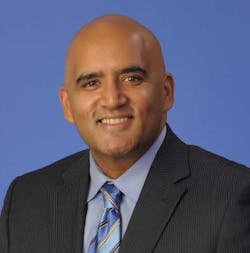How ITS technologies can reduce congestion and emissions
After a year of minimal travel, this summer got off to a roaring start. Just before Memorial Day, AAA forecasted travel to jump by 60% for the holiday period. At U.S. airports, Friday, May 28 was the single highest travel day (7.1 million people screened) since March 2020. We have been anticipating the return of traffic—and with it, the uptick in congestion and greenhouse gas emissions.
Before COVID-19 hit, Americans spent roughly 100 hours a year in congestion. It is bad enough that we lose so much time sitting in our cars, but all that idling also adds up to more greenhouse gas emissions and negatively impacts air quality. The transportation sector is responsible for 29% of U.S. greenhouse gas emissions—more than electricity and all other industries. It is a very straightforward proposition: If we reduce congestion, we will reduce emissions.
Earlier this year, President Biden set a goal of cutting U.S. emissions in half by the end of this decade. Without urgent action and a multipronged approach, we will not reach this goal. Deploying technology in transportation is a key tool to deliver on this promise; we must electrify the system, operate it more efficiently, and deploy connected vehicle communications.
On the electrification front, it is not enough just to electrify the fleet. A significant modernization of the grid is vital to meet the growing needs for electric vehicle (EV) charging and the ramping up of renewable energy. These two go hand in hand for reducing emissions in the transportation and electricity sectors. In addition, an updated resilient grid prevents major disruptions such as what happened when winter storms hit Texas earlier this year.
According to research from Atlas Public Policy, the U.S. will need to invest more than $87 billion in charging infrastructure over the next decade, including $39 billion for public charging, to achieve 100% passenger electric vehicle sales by 2035 and put the nation on the path to full electrification.
In April, the Federal Highway Administration (FHWA) issued guidance that supports the consistent use of highway right of way (ROW) for renewable energy generation, electrical transmission, and distribution projects, among others. It noted such uses “enable breakthrough transportation technology related to electrification and connected and autonomous vehicles.”
Technology is also helping us make great strides in operating the system more efficiently, particularly using predictive analytics and AI. The Central Ohio Transit Authority (COTA) and Waycare Tech recently launched a cloud-based AI system that will increase traffic safety and reduce travel time for area residents. It is the first AI implementation involving transit agencies and allows them, along with counties and public safety organizations, for the first time to share, view, prepare, and react to real-time traffic information from 13 counties on a single platform.
The third leg of this stool is the deployment of connected vehicle technologies. About half of U.S. traffic congestion is caused by non-recurring incidents. If we can reduce crashes, we will reduce congestion. The National Highway Traffic Safety Administration has said Vehicle-to-Everything (V2X) technologies could eliminate or significantly reduce 80% of non-impaired crashes. In addition to V2X technologies’ tremendous safety value, they are vital in our quest to reduce congestion and emissions. While the Federal Communications Commission gave away a majority of the spectrum that was reserved for V2X technologies, ITS America and the American Association of State Highway and Transportation Officials filed an appeal of that order in early June.
Deploying intelligent transportation technologies can transform our system—from reducing emissions and congestion to saving lives and providing equal access to mobility for all.
